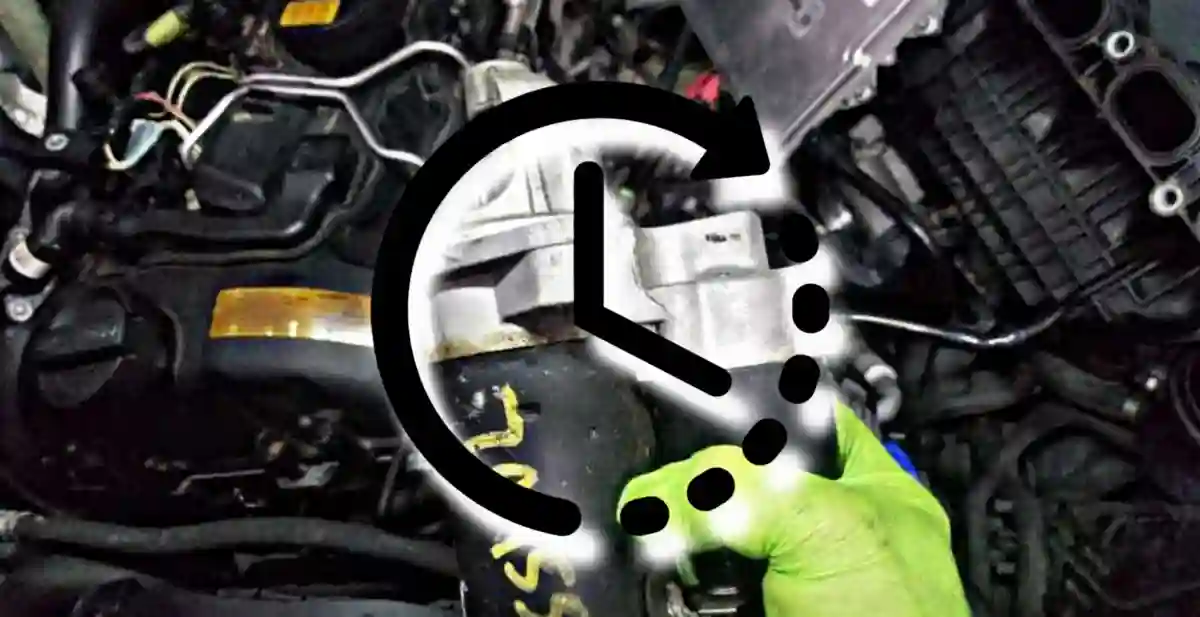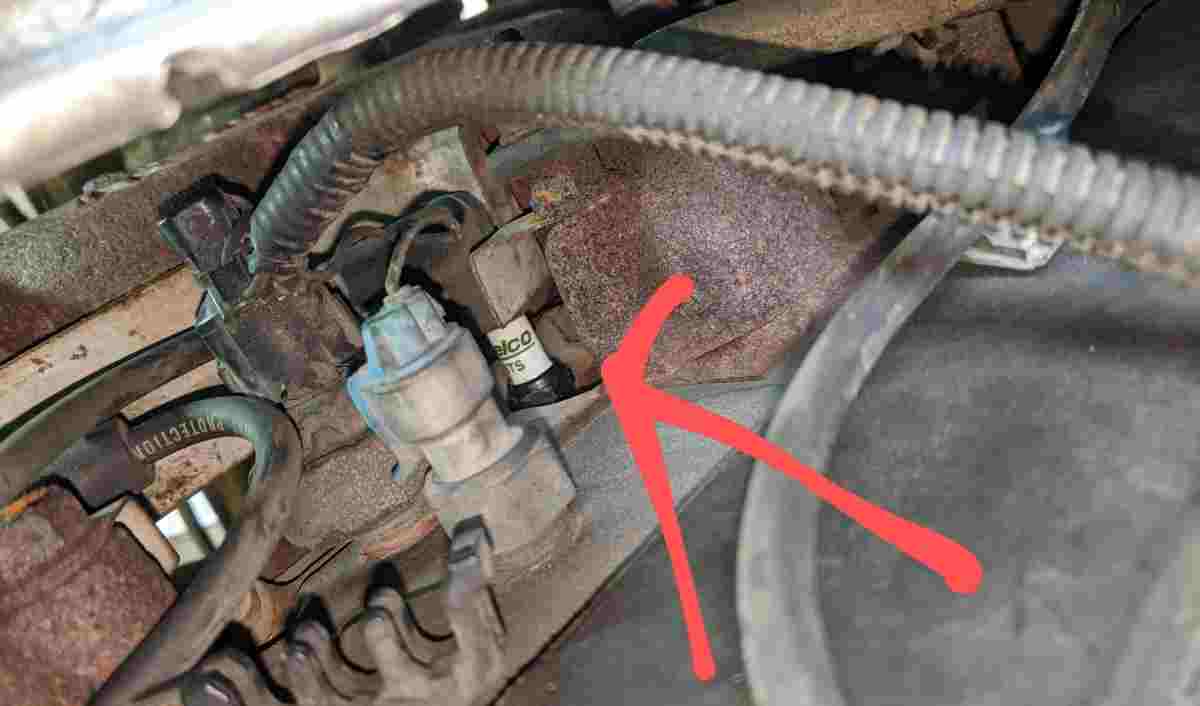The starter is essential in the ignition process since it starts the engine when you turn the key. On the other hand, a faulty starter may be extremely inconvenient, leaving you stranded and perhaps causing further damage. But how long does it take to replace a starter?
The answer can significantly differ based on factors like car’s make and model, your level of mechanical skill, and the accessibility of the required tools. Fortunately, in this article, we will delve into how long it takes to replace a starter, the steps on how to successfully replace a starter, and why it is important to replace a starter.
How long does it take to replace a starter?

Several factors, which can vary significantly, greatly influence how long it takes to replace a starter. On average, the replacement process takes between two and four hours. However, it could take longer if the person performing the task is inexperienced or if the vehicle is complex.
Here are the key elements that can influence how long it takes to replace a starter:
1. Car make and model
The starter system differs from one car to another, and some systems are more complicated than others. For instance, starters located in tight spaces can be challenging to access and replace, while some cars/vehicles have intricate systems that necessitate special tools or expertise.
Many cars have an easily accessible starter that can be removed and replaced in under an hour.
2. Condition of the car
The condition of the car can greatly influence how long it takes to replace a starter. If the car is in superb condition and all its components are easily accessible, then the replacement can be done expediently.
On the other hand, assuming the car is outdated or has rust and corrosion that hinders access to the starter, it can take longer to change.
Furthermore, the replacement process can even take longer time supposing the car has other issues that need attention, such as a bad battery cable or a worn alternator. In some cases, the condition of the car may even make it infeasible to replace the starter without fixing other issues first.
3. Mechanical skill level
The experience of the person replacing the starter significantly impacts the time taken. Someone with prior experience working on cars and who has replaced starters before will be able to finish the job faster compared to someone without any experience.
4. Age of the starter
Also, the age of the starter has a big impact on how long it takes to replace a starter. Let us assume the starter is older and has been in use for many years, it is more likely to have worn down and become less dependable.
This might further result in a longer replacement process as the technician must take extra time to diagnose and fix any underlying problems.
Conversely, a newer starter that has been in use for a short period is less likely to have undergone serious wear and tear, which can make the replacement process quicker and simpler.
Furthermore, the starter’s complexity and the type of car it is in can also affect how long it takes to replace it, as modern, technologically advanced cars often necessitate a longer replacement process.
5. Complexity of the electrical system
The intricacy of an electrical system has a significant influence on the duration of replacing a starter. When the electrical system is straightforward, with clear wiring and simple access to the starter, the replacement can be accomplished relatively quickly.
On the other hand, suppose the system is complicated, with multiple wires and components. the replacement can be a much lengthier process. Furthermore, the replacement process can also take longer periods if the starter is in an area that is hard to reach.
The complexity of the electrical system can also complicate the diagnosis of the issue, leading to extended repair times. In some situations, the complexity of the system may demand specialized tools or expertise, adding even more time to the replacement of the starter.
6. Type and quality of tools
The type and quality of tools you intend to use also play a role in determining how long it takes to replace a starter.
If the person has all the necessary tools readily available, the task will be completed more efficiently than if they have to stop and gather the tools along the way.
7. Accessibility
The position of the starter in the car significantly also affects how long it takes to replace a starter. Let’s say the starter is easily accessible, the job can be completed quickly, but supposing it is located in a hard-to-reach area, the process will take a longer period.
How to replace a starter
This step-by-step guide will provide all the information you need to successfully replace a starter.
Step 1: Disconnect the battery
The first step is to disconnect the negative battery cable. This will prevent you from risking electrical shock during the starter replacement process.
Use a socket wrench to loosen the nut and remove the cable. You can also connect an extension cord from your vehicle to provide additional lighting.
Step 2: Locate the starter
Two cylindrical devices are usually attached to the starter, one of which is bigger than the other. The smaller cylinder is the starter solenoid. You can recognize the starter by the connection between the battery and the solenoid.
A wire usually runs from the battery to the solenoid’s terminal, often located at the top of the solenoid. This connection is crucial in finding the starter as it is the primary connection between the battery or fuse box and the starter.
Locating the starter can be difficult as every car is built differently. The best solution is to consult the owner’s manual for your car. If it’s not available, you can search for it on the manufacturer’s website using the model and release year of your car.
Step 3: Remove the starter
Disconnect the wires connected to the starter and use a socket wrench to remove the bolts that hold the starter in place. It is important to keep track of which bolts go where as they may not be the same size.
Step 4: Install the new starter
Place the new starter in the same location as the old one, which may require some adjustments to fit it into the slot properly.
Connect the wires to the appropriate terminals, with the positive wire usually connected to the top terminal and the negative wire connected to the bottom terminal.
Once the wires are connected, secure the starter with the proper-sized bolts and tighten them securely.
Step 5: Reconnect the battery
Reconnect the battery cable by reinstalling the nut and tightening it with a socket wrench. Your starter replacement is complete once the battery connection is secure.
Step 6: Test the car
Start the car and make sure the engine turns over smoothly. If not, pay attention to any sounds it makes. If the car doesn’t start, check the battery and the starter connection to ensure a proper connection is made.
Is it difficult to replace a starter?
Replacing a starter is not a difficult task, but it does require a certain level of mechanical knowledge. The most challenging aspect of the process is often locating the starter, as it can be situated in different positions depending on the make and model of the vehicle.
Once the starter is accessible, the replacement process involves removing the old starter and installing the new one by simply loosening and tightening the bolts. However, supposing you lack the skills or tools to replace the starter, it is advisable to seek the assistance of a professional mechanic.
Without further ado, replacing a starter is not difficult, but it does require some basic mechanical understanding. The most challenging part of the job is often accessing the starter, but once it is located, the rest of the process is relatively straightforward.
Why it is important to replace a starter
The starter is an essential component of an internal combustion engine, and its failure can have significant consequences. So, it is important to replace a starter once it develops a fault.
1. Vehicle reliability
One of the important reasons to replace the starter is to maintain the reliability and smooth operation of the vehicle.
A worn-out or damaged starter can lead to problems such as slow engine cranking, grinding noises, or complete engine failure.
Also, a faulty starter can result in battery drain, which can leave you stranded in case of an emergency.
2. Improves fuel efficiency
Improving fuel efficiency is another reason why it is important to replace the starter. A worn-out starter can cause the engine to run poorly, leading to decreased fuel efficiency and increased fuel costs, as well as the reduced lifespan of the vehicle.
Additionally, a failing starter can also emit higher levels of pollutants, which can harm the environment.
3. For safety reasons
Replacing the starter is also important for safety reasons. A failing or bad starter can cause the engine to stall, which can be dangerous on the road or in traffic. Additionally, a faulty starter can cause the car to stall while driving, increasing the risk of accidents.
4. Extends the lifespan of your car
Finally, replacing the starter can also extend the lifespan of the car. A well-maintained starter can last for many years, and by replacing it when it fails, you can ensure that the car continues to run smoothly and reliably for an extended time.
FAQs
Why hasn’t my car started after replacing the starter?
One possibility is that the battery is not strong enough to turn the engine over. Another possibility is that the new starter was not installed correctly, or there might be an obstacle preventing the engine from rotating.
How often should you replace a car starter?
The lifespan of a starter varies between different vehicles, but the average is about 100,000 miles. This means that once your car reaches this mileage, the starter may start to fail.
What does a starter look like in a car?
A starter in a car is a small cylindrical device that is usually attached to the engine. It consists of a solenoid, which is an electromagnet that activates the starter motor, and a flywheel, which helps to start the engine.
How much does it cost to replace a car starter?
The cost to replace a starter in a car can range from $200 to $1400, including both parts and labor. This is just an estimate and the actual cost may be higher or lower depending on the specific circumstances.
Final thoughts – How long does it take to replace a starter?
In general, it takes a professional mechanic between two to four hours to replace a faulty starter, which is considered a relatively straightforward task. However, the process may take longer if the mechanic needs to disassemble parts of the vehicle to access the starter.
The tools required for this repair job are basic hand tools. Remember, it is crucial to disconnect the battery before beginning the replacement to prevent any electrical sparks from occurring during the repair process. This safety measure is of utmost importance to ensure a safe and successful repair.


